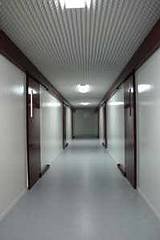Gregor Schneider
dal 16/3/2007 al 14/7/2007
Segnalato da
16/3/2007
Gregor Schneider
K21 Kunstsammlung, Dusseldorf
Solo show

Solo show
Gregor Schneider, born in Rheydt in 1969, first made a name for himself in the early 1990s with subtle, barely perceptible doubled walls in galleries and art museums. Later whole sections of his so-called Haus u r in Rheydt – having undergone decades of alterations and additions – were dismantled and shown internationally in touring exhibitions. The climax of Gregor Schneider’s work on Haus u r came with his contribution to the Venice Biennale in 2001, when he implanted a complex of twenty-two rooms, passages and dead-ends into the German Pavilion – which earned him the much-coveted Golden Lion award at the Biennale. Gregor Schneider has long been fascinated with the idea of ‘working with the unknown’: ‘And the more I deal with it, the more unknown it becomes. That’s the challenge for me, to keep running on the spot.’ Recently Schneider has risen to this artistic challenge by referring to socially relevant spaces that are, however, not normally; the references range from a religious centre (the Caaba in Mecca) to a red-light district frequented by child prostitutes (Steindamm, Hamburg) to the maximum-security internment facility on Cuba (Camp V, Guantánamo Bay).
The Kunstsammlung is presenting a new ensemble specially created by Gregor Schneider for this exhibition. A series of rooms – accessible to the exhibition-goer – has been built into the existing architecture of the museum: long corridors and confined cells equally reminiscent of intensive care wards and isolation units, of protection and confinement, that can be read either as zones of extra attentive care or of social and sensory deprivation. Individual rooms call to mind prison cells, interrogation rooms, holding areas or exercise tracts under constant surveillance. The artistic strategy of doubling and replication, that is fundamental to Gregor Schneider’s work, is again in evidence here. The exhibition is a response to images circulating on the Internet of the United States’ maximum security facility Camp V at Guantánamo Bay on Cuba, a ‘no-man’s-land that is shielded as far as possible from the public gaze. The title of the exhibition also references the secret and the clandestine. ‘White torture’, also known as ‘clean torture’, is used of methods that are designed to destroy a person’s mind without leaving any external evidence and hence extremely hard to prove.
Although these rooms are modelled on a real place, the absence of traces of human activity or of narrative details makes it impossible for the viewer to quickly or easily classify them. They seem strangely familiar and recognisable, although there is no concrete situation or specific place that we as individuals could connect them with. In their abstract, crystalline purity and dramaturgical progression, they develop an oddly compelling dimension that is all but impossible to resist. A succession of entangled suppositions, intuitions and subconscious memories is set in motion, blurring the dividing line between reality and imagination, the familiar and the unknown. The interplay of light and darkness, warm and cold, movement and stasis, proximity and distance plus the deliberate use or withdrawal of sensory stimulants induces a range of new, unaccustomed sensations. Entering into this piece means abandoning our usual perceptions of ourselves and the space around us, with the result that we start to question our own situation and place in the world. This is an exhibition that poses existential questions as to the conditio humana in the world today.
Catalogue
The exhibition is accompanied by a publication (in German and English) with essays by Julian Heynen and Brigitte Kölle, a short selection of texts on different aspects of space and numerous colour illustrations; 132 pages, Verlag der Buchhandlung Walther König, Cologne. Available in the museum.
K21 Kunstsammlung
Ständehausstrasse 1 - Dusseldorf



